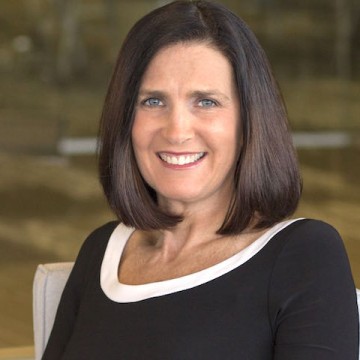This post originally appeared on the Citrix Guru blog.
Citrix announced recently that all Citrix communities will be consolidated under the management of Ron Oglesby.
This interview has been prepared with the help of my fellow CTPs Jarian Gibson and Tobias Kreidl.

Hi, Ron! Thanks for taking the time our of your busy schedule to answer questions for us. The Citrix Community knows you very well, as you have been presenting Citrix App Layering (previously Unidesk) at many CUGC events. We had the privilege to host you in New York City and your session was popular with a massive crowd. But for those who don’t know you, can you introduce yourself, and explain your background and career?
Sure, I started in the computer business…. Ah, that’s too far back. I’ve been in this space for my entire career, just about 20 years now. I’ve been at Citrix channel partners as a consultant and architect, I was a Citrix Instructor for a while — even was like CCEA number 2 or 3 or something crazy low like that. I then shifted to Server Virtualization/datacenter consolidation in the early days of VMware, but eventually circled back to EUC at Unidesk and now Citrix, through that acquisition.
Citrix has announced recently that you will lead all communities (including Citrix Technology Advocates, Citrix Technology Professionals and the Citrix User Group Community). Can you explain your new role and what it entails? Are these new responsibilities replacing or in addition to your work as Director of Advanced Tech?
Basically, Paul (@svengelsk) had the CTP program by itself (he and Perrine (@pcrampton), who every CTP knows). But the CTA and CUGC programs were somewhere else in the org. What we are doing is moving the communities under one roof and hopefully getting some synergy from all these folks sharing ideas and working these programs together, within the same org and the same chain of command. As for being the Director of Advanced Tech, I guess that is still my title, so I still have those responsibilities along with these new ones.
Before taking this role, what areas of improvement did you identify in the various Citrix communities?
I actually think that we can get the CTPs and others in the community more involved in the feedback loop with our development teams.
Being a former CTP and MVP, what are your vision and goals for the Citrix communities?
As I noted before, interaction with the engineering side of the house is a goal of mine. Actually it may be my number one goal here as I take over. Getting our customers (and consultants) involved with the development teams so they can provide feedback, constantly, throughout the process is huge. Asking questions like: Is this a good idea? Do customers want this? Here, I have designed this… is this what you wanted? I think that these programs need to be a two-way street where they are just as valuable to the participant as they are to Citrix. And I think the most value we can find, as a company, is feedback on product, early enough that it can save dev time and focus our efforts.
Let’s talk a little more about the CTP program. You were one of the first Citrix Technology Professional in 2006, how do you feel leading this program today and what excites you the most
It’s actually kind of crazy to think about. Back in 2003/2004 Brian Madden and I were writing articles about the Microsoft MVP program, wanting something similar from Citrix. Then working with a lot of the early CTPs as presenters at BriForum when the whole CTP thing started on a shoestring. I think there were 10 or 12 of us at the beginning. And really no one even knew what to do. They brought us down to Florida; Brad Pederson came in and gave some presentations, we got to argue about VDI (it wasn’t even called that back then). And finally, we got tours in the offices and labs. Basically we were all a bunch of old school WinFrame and MetaFrame geeks that just dug Citrix.
Now, the program is so much bigger. Better (even constant) communication with the CTPs. Geek Speaks and other opportunities are great. Obviously, there are more products and specialties now (back then there were no mobile products, networking, etc). I think we have an opportunity here to make this an awesome program, that both helps the community at large, but also can impact our products and make them better.
The size of the CTP community is currently limited to 50 members, far lower than similar programs from competitors ex: VMware vExperts (1,346), Microsoft MVP (3,531) and Nutanix Technology Champion (151). In your view, what is the reason for this limited cohort size, and will you continue to keep this restriction?
I haven’t given this a ton of thought yet, but let’s talk about some of my initial feelings here. Comparing it to Microsoft is hard… I mean there may be 3,500+ MVPs, but those are spread over how many specialties? And RDS is just one of those (and it’s not even RDS anymore, it’s like Enterprise Mobility or something?) I mean there are Microsoft Office MVPs, Security MVPs, and it makes sense, they are a 100,000+ person company, with lots of development going on. So, can the number change? Sure, it can. I just don’t want to raise it or lower it on a whim. There needs to be logic and reasoning behind it. As we go forward, we’ll see where this number needs to be, and make adjustments as needed.
What are the challenges facing the Citrix communities right now?
Right now, I think some of the groups want more content and more presentations from Citrix. I don’t necessarily believe that Citrix employees need to present that content, but the community needs VALUABLE, HELP-ME-TODAY, THAT-WAS-AWESOME content. I have always believed (as a presenter) that the audience is giving me their time. And their time is just as valuable (if not more) than mine is. I need to pay for that time by making sure they walk away with something useful. Something that they can say “that was worth me driving in and sitting there for 45 minutes”.
Right now I have seen the difference in groups that are giving rote presentations on basic features, and those that have users or CTPs or someone from Citrix presenting a “Here is a cool way to do this/fix this problem” something that has immediate value to that audience member. I want to enable more people in the community to give presentations with harder hitting info, that will, in-turn, drive admins and architects to get to the meeting. I want them thinking “Man, I can’t miss this meeting, they are doing a presentation on X”
You’ve served in the US Navy. How has this experience impacted your career?
I think my time (and I was a young man back then) shaped how I work with and lead people. Mostly it impacted how I deal with teams that I have run and employees I have had. I still use a bunch of those lessons now, even 25 years later. But I had some great people that taught me a few key lessons that I still try to focus on today:
- Never ask your people to do something you aren’t willing to do… and willing to do right now, with them.
- If your team screws up, it’s your fault. You are there to help them, and enable them, set them up to succeed. Let them take credit for the good work. The bad is on you as the leader.
- Mission first. Define what you are trying to do, and focus on that. Get rid of all the extraneous things that will distract your people from that goal. Noise and distractions are the enemy of focus.
What mark do you want to make on the various Citrix community programs?
Hopefully, people (inside of Citrix and out) will say it is a better program. That is all I want, to leave it better than I found it. The folks on my team have already done so much hard work to get to where we are today. I just want to help them do more. If people think my changes were valuable to them and helped them as individuals and in their jobs, then I’ll be happy.
Feedback is often provided to Citrix product teams, but not always heard. How can you help to make sure that the communication and collaboration is successful between Citrix communities and its employees?
I’m not sure that the feedback is “not always heard.” I actually think that the feedback is heard, but is often coming at the wrong point in the dev cycle to make a difference.
As an example, if we show CTPs a set of features being released in 3 or 4 weeks, that stuff is already in code. It’s done. It’s baked. The dev hours are spent and the code is coming. So, if these features aren’t the ones that you think should be at the top of the priority list, it’s already too late. I want to try to get a feedback loop going so that way back in the design phase our teams can have access to community input. Now this is a learning thing for sure. We have to know WHAT TO ASK of our community to actually get valuable feedback. And at the same time the community needs to know, that while we value that feedback, sometimes it doesn’t always make it into code right away.
Having worked in software companies for 8 years now, I can tell you that having customers give you their problems and needs early and providing feedback along the dev cycle is truly key to saving time and money on product development.
In your opinion, what benefits do the Citrix communities bring to their members? What ways can Citrix continue to incentivize and encourage participation from (and provide value to) to its members?
I think that when done correctly, the community should make someone’s daily life easier. Full stop. Maybe that is through a presentation they saw outlining best practices for design (saving someone time at their job) or maybe it’s a troubleshooting doc they got from another member that takes a problem from a 3 hour fix to a 10 minute fix (saving time when that phone call comes at 9pm while they are at home). I mean, the real value in tech communities is their ability to support each other. The only incentive, I think, that means anything to drive participation is that they feel the content and people are making their lives easier. If you don’t see a benefit, didn’t learn something new, why spend the time and effort?
On a lighter note (and as our last question), what do you like to do in your free time?
I spend a bunch of time outdoors. Staring at screens and sitting at desks is not what we were meant to do! I lift every day at the gym. I like to hunt and fish and work on my mini-ranch out here in Texas. I work in the garage on the cars and other toys always expanding my collection of tools. And I love to cook. I like to make stuff homemade that others might buy from the store. Homemade biscuits and sausage gravy is one of my family’s favorites. Grilling, my BBQ chicken is top notch. But my favorite is making a pot-pie. Homemade lobster or chicken pot-pie with everything cut and cooked fresh. Takes like 3 hours to do it right… But it is good eating.
Thank you, Ron.
Note: you can follow Ron Oglesby on Twitter



